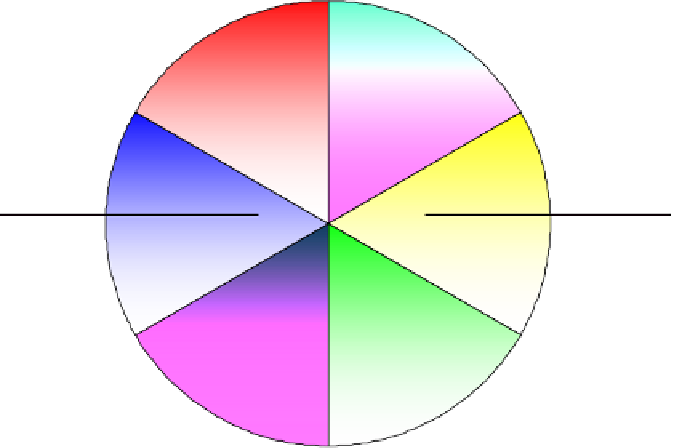Information Technology Reference
In-Depth Information
Spatial Resolution
HDTV
Viewing Angle
HDTV
Viewing Angle
HDTV
䋨
2K
2K
㬍
1K
1K
䋩
HDTV
䋨
30 degree
30 degree
䋩
㸢
UHDTV
UHDTV
䋨
4K
4K
㬍
2K
2K
䌾
8K
8K
㬍
4K
4K
䋩
㸢
4K
4K
䋨
76 degree
76 degree
䋩䌾
䋩䌾
8K
8K
䋨
100 degree
100 degree
䋩
View Point Resolution
2 dimension
Temporal Resolution
30 frame/sec
View Point Resolution
Temporal Resolution
2 dimension
㸢
3 dimension
30 frame/sec
㸢
60
3 dimension
60
䌾
300 frame/sec
300 frame/sec
Color Format
Color Format
4:2:0, 4:2:2
Bit Depth
Bit Depth
8 bit/pixel
4:2:0, 4:2:2
㸢
4:4:4
8 bit/pixel
㸢
12
4:4:4
12
䌾
16 bit/pixel
16 bit/pixel
Fig. 43
Factors to be qualified into UHD Video
The specifications for UHD formats are planned to be standardized in ITU-R by
2012.
In the next section, the requirements about these resolutions and modes of the
expression are considered, and the increase in the amount of information by ful-
filling the requirements is measured.
4.1.1 Requirement for UHD Video
4.1.1.1 Spatial Resolution
Based on the fact that the angle of resolution of the human visual system is one
minute degree, an HD image covers about 30 degrees of useful visual field, which
can be recognized only with eyeball motion and without moving ones head. When
the viewing angle is extended to 60 degrees of gazing viewing angle in which ob-
jects can be recognized only with little movement of ones head, 4K image can
cover the angle. Furthermore, when a viewing angle is extended to 100 degrees of
guidance viewing angle in which the existence of objects within the angle can be
felt, 8K image can cover the angle. Although the video with 4K and 8K of UHD
exceeding HD are already standardized as a video format of 3840x2160 and
7680x4320 in ITU-R Recommendation [20], video services with such resolution
have not yet been deployed.
4.1.1.2 Temporal Resolution
30 fps (frame per second) used by the present television broadcasting was selected
since it is the limit of the human visual system for flicker detection. However, it is



